Logic Pro X Tutorial: Programming Beats
There’s more than one way to skin a cat, as the saying goes, and the same is true of programming drums in Logic – Alex Holmes looks at three very different approaches for writing hip hop, house and drum ’n’ bass beats… Logic has a raft of tools that can be brought into play to […]
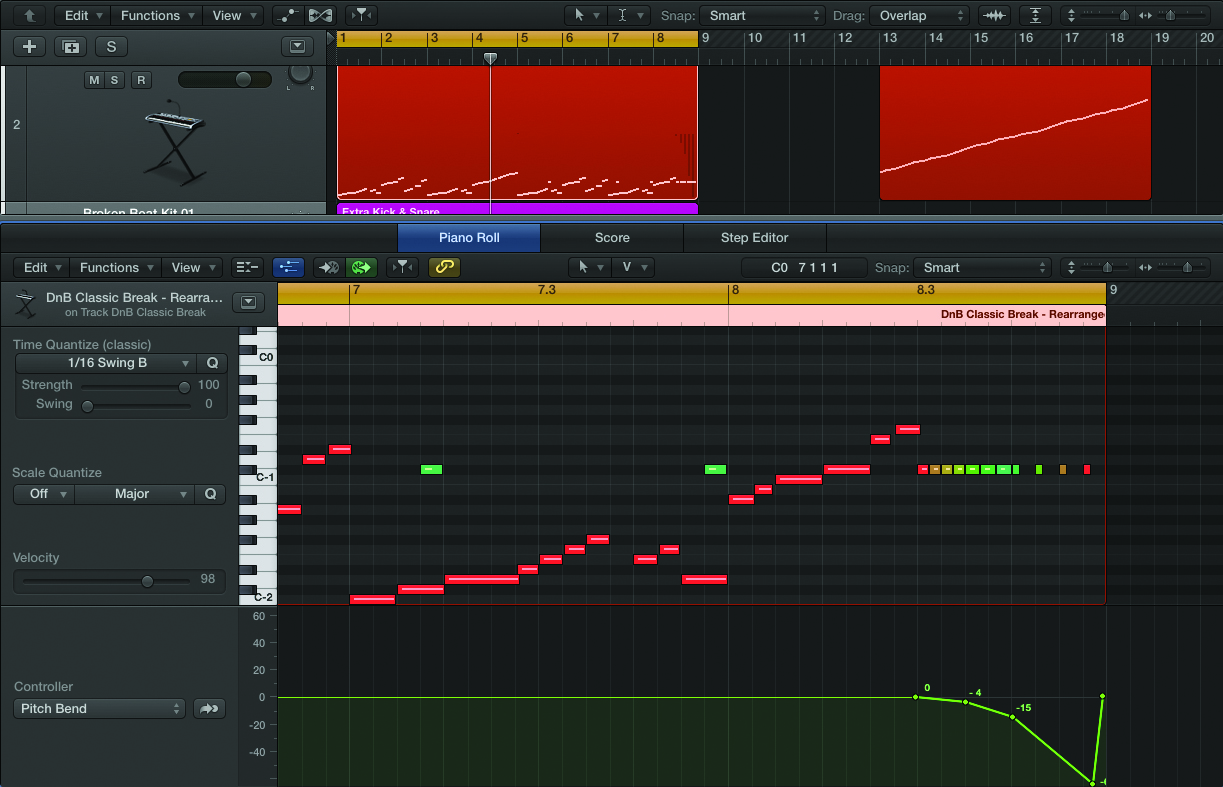
There’s more than one way to skin a cat, as the saying goes, and the same is true of programming drums in Logic – Alex Holmes looks at three very different approaches for writing hip hop, house and drum ’n’ bass beats…
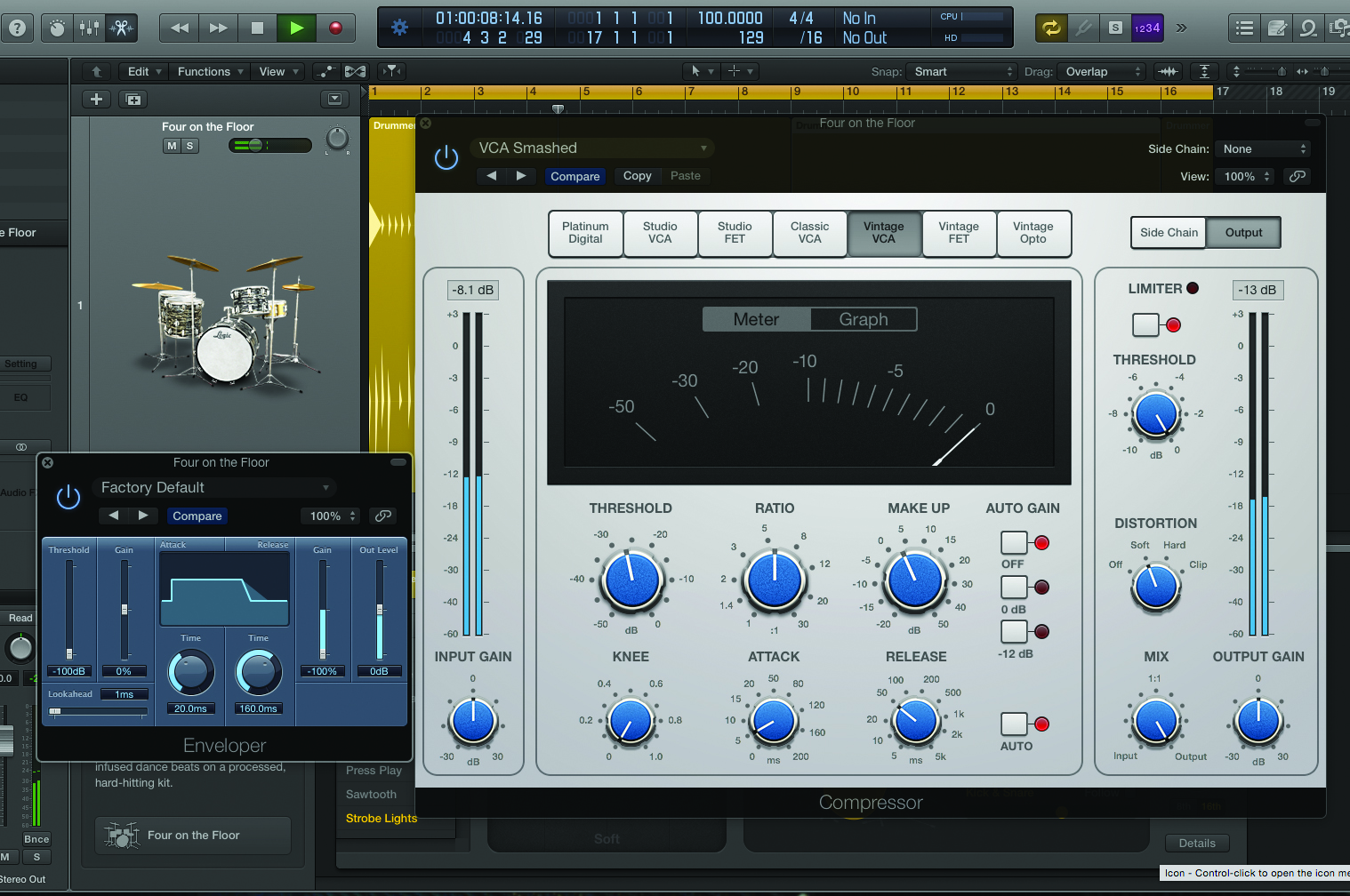

Logic has a raft of tools that can be brought into play to help produce drums in your tracks. It can be important to select the right ones for the job in hand, though, as this will improve your workflow no end. Looking to write a natural-sounding drum fill?
Try using Drummer. Want to layer some tight-sounding electronic beats? Load up Drum Machine Designer so you can fine-tune the sounds to fit your track. That said, don’t be afraid to mix-and-match ideas, such as taking the MIDI from a Drummer track and using it to play more electronic or unusual sounds from a different instrument.
In this workshop, we’re going to look at using three different approaches to write a hip-hop beat, a house beat and a drum ’n’ bass beat. Although Logic’s built-in library is pretty extensive and continues to grow, it’s important to start compiling your own collection of sounds through sample packs, sampling and even synthesis, as this will help you start to develop your own sound as an artist.
Over time, you’ll realise you’re gravitating towards particular styles of kicks, snares, claps and other hits, and this will play a massive part in defining your sound.
In dance music in particular, these sound choices can have a big impact on how your music is perceived and which DJs are likely to play it. If your favourite producer mostly uses big, house-style hand claps and live-sounding hats, and you choose to use a crunchy, dubstep snare, and harsh electronic sounds, then even if the rest of the track fits their style, they’re unlikely to play it, as it will sound out of place in the mix.
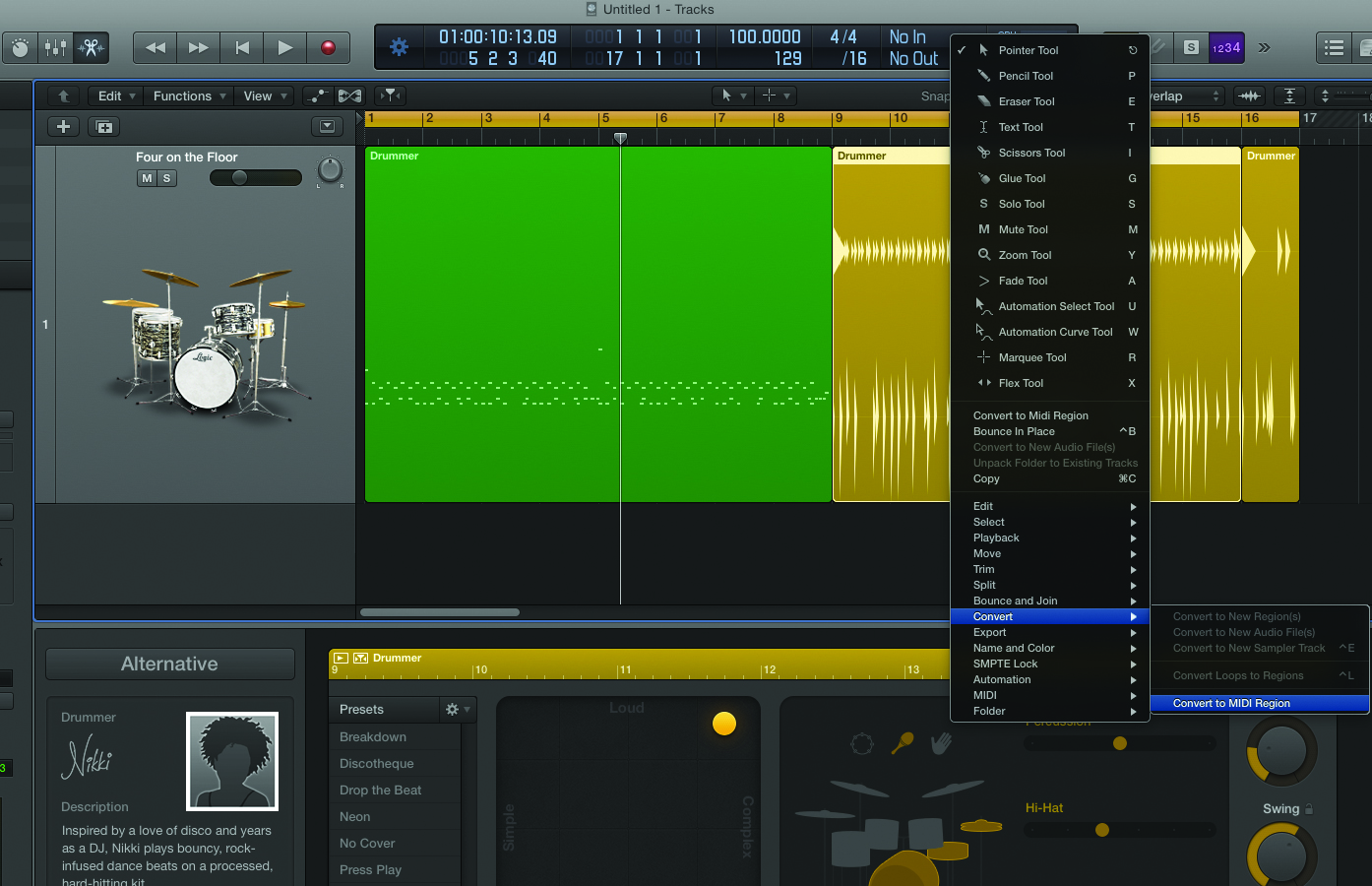
That’s not to say you can’t be experimental with the sounds that you use; but just be aware that what’s considered cool in the dance-music landscape is constantly changing, and as a community, they can be a notoriously picky bunch!
With hip-hop drums, you’ll want to decide which era you’re going to use as an influence. A lot of hip hop in the 90s used chops from old breaks, but trap and more modern-sounding hip hop tends to favour 808s and more electronic sounds. Some styles combine the two, or will layer in heavily processed Foley sounds to add depth.
You could start by sampling single hits from an old record and feeding them through an unusual impulse response or effect to give them an edge. Then you could go around your room with a microphone, finding things to tap and record (including your own voice), layering them to create original-sounding textures.
House-music drums can also vary wildly, depending on the sub-genre.
However, a lot of traditional-sounding house music – the likes of which currently gets a lot of airplay on UK radio – tends to be fairly safe with its drum choice in a bid to translate well in the club. Even after all these years, the 808 and 909 kicks, claps and hats are still widely used, albeit with a variety of heavier processing, as they just sit so well in the mix, and work so well on the dancefloor.
It’s worth familiarising yourself with their characteristics, as it can be helpful to relate to them when hunting down new sounds. For example, if a kick is 909-esque, then you know it will potentially poke through the mix, but leave enough space for a sub-heavy bass. Many producers will start with these bread-and-butter drum sounds to build a foundation, then layer different and more interesting hits on top to create character and to disguise the more familiar sounds.
Finally, drum ’n’ bass breaks are arguably the hardest to produce, due to the intricacies of the drum programming, which must be balanced by the need for
everything to be extremely loud! A lot of the drum production is based around finding multiple hits with different characteristics and then layering them to form a big, upfront sound. If you’re looking to program a more complex and energetic, jungle-style break, then working with REX files can be a great way to chop and change small snippets of the groove and program rolls.
On the production side, the rule book is often thrown out the window, with extreme compression and clipping used to push sounds to the limit, although you need know when you’ve gone too far based on how aggressive you want the final sound to be.
Focus On – Phase Cancellation
Even if you use EQ for separation, you’ll often find that certain frequencies will overlap when you layer up two or more sounds. When this happens, the waves can stack up on top of each other and you may end up with phase cancellation, which will usually result in a thinner- or weaker-sounding whole.
The best way to check for and combat this is to load up a Gain plug-in (or some kind of utility plug-in if you’re using a different DAW) on your extra layers and invert the phase. You should notice that one way round will sound fuller and more punchy than the other. If in doubt, try muting the second sound in and out, and listen to whether it simply adds to the first sound, or changes it. It’s also a good idea to do this with your kicks and subs.
Programming Hip Hop Beats With Drummer
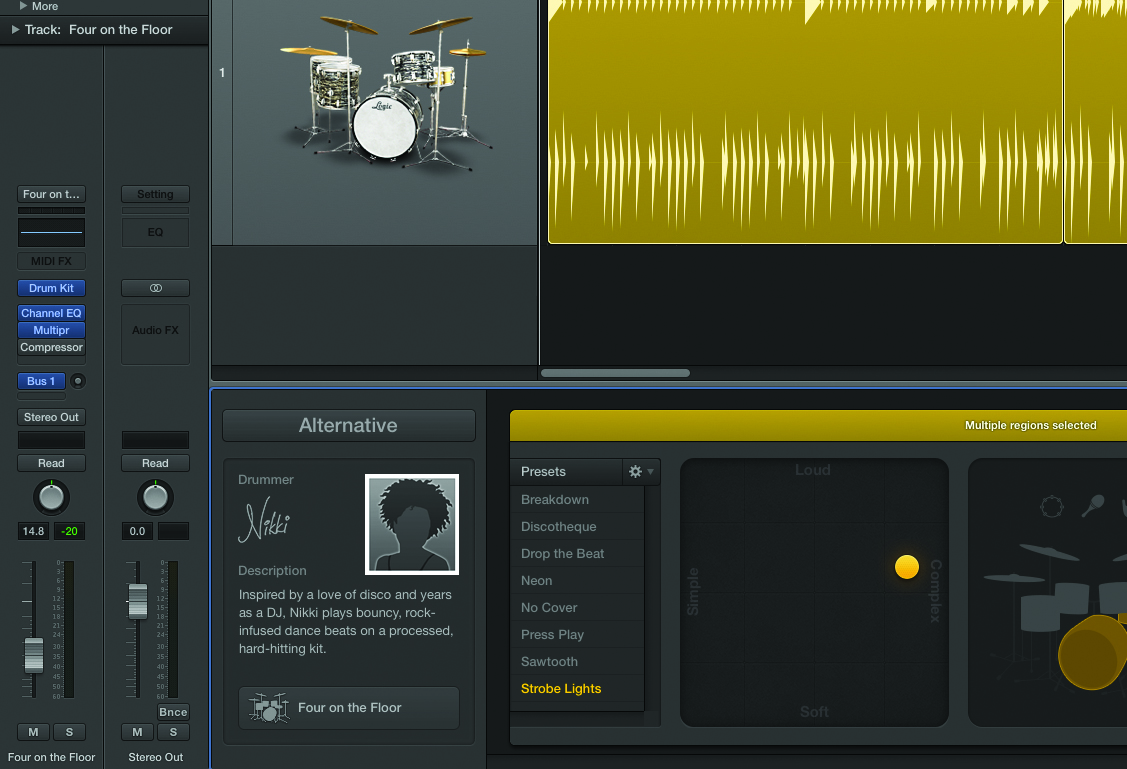
1: Let’s start by loading up an instance of Drummer. You may want to download a few different Drummers to explore different patterns, but for our beat, we’re sticking with the soul/disco grooves of Nikki.
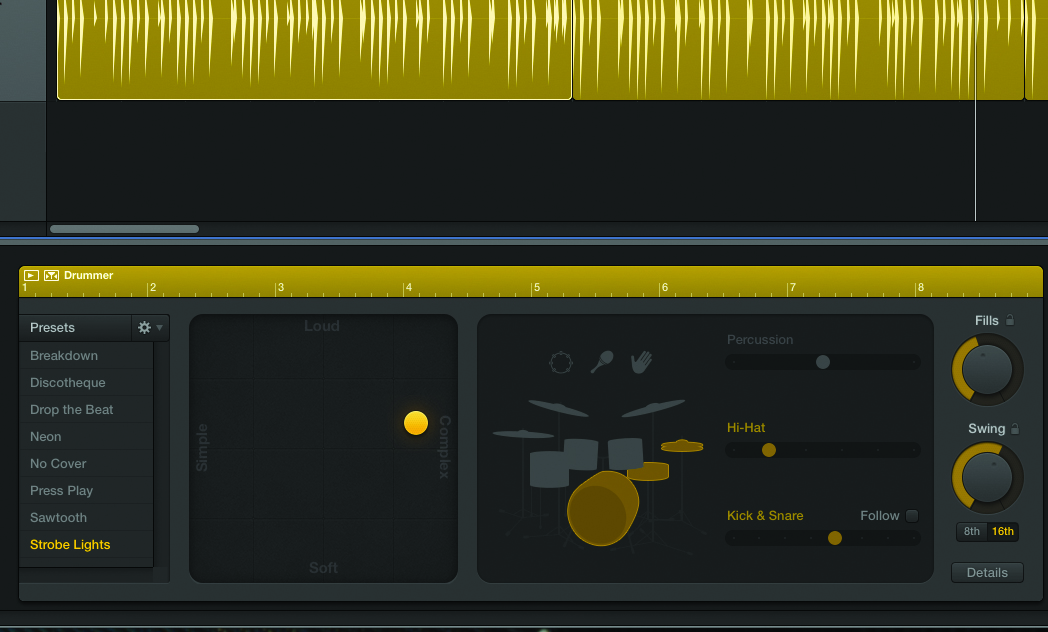
2: Switch on the kick, snare and hats on the right and start to play with the sliders to add some character and detail to the beat. We’ve gone for a more complex kick and snare pattern, and a simpler hat played with medium strength.
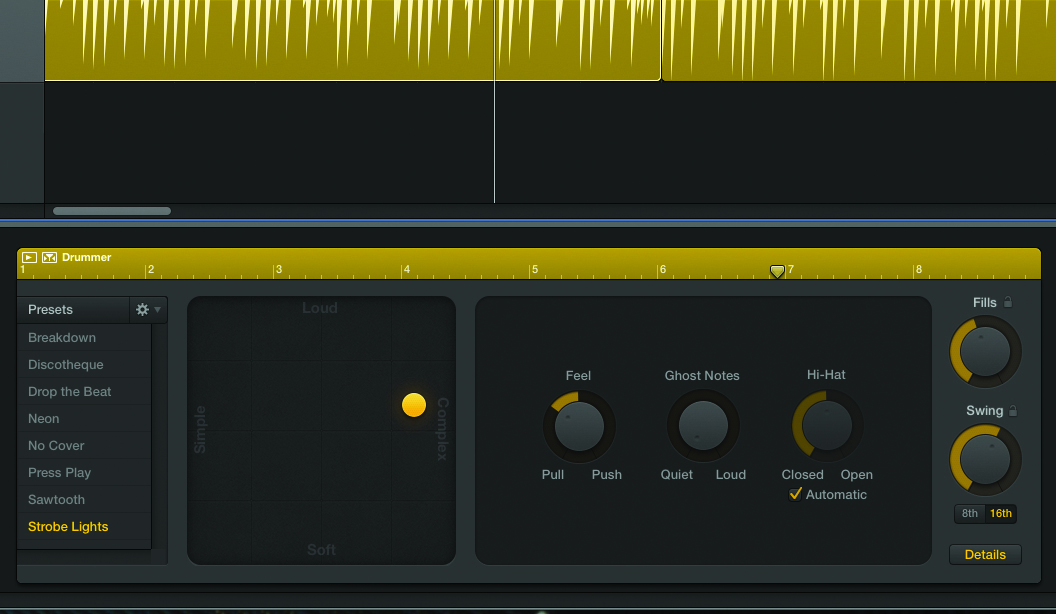
3: The vibe from a lot of hip-hop beats comes from their laid-back nature. Try adding around 66 per cent 16th-note swing, then click ‘Details’ and adjust the Feel more towards Pull, with Ghost Notes set to Quiet.
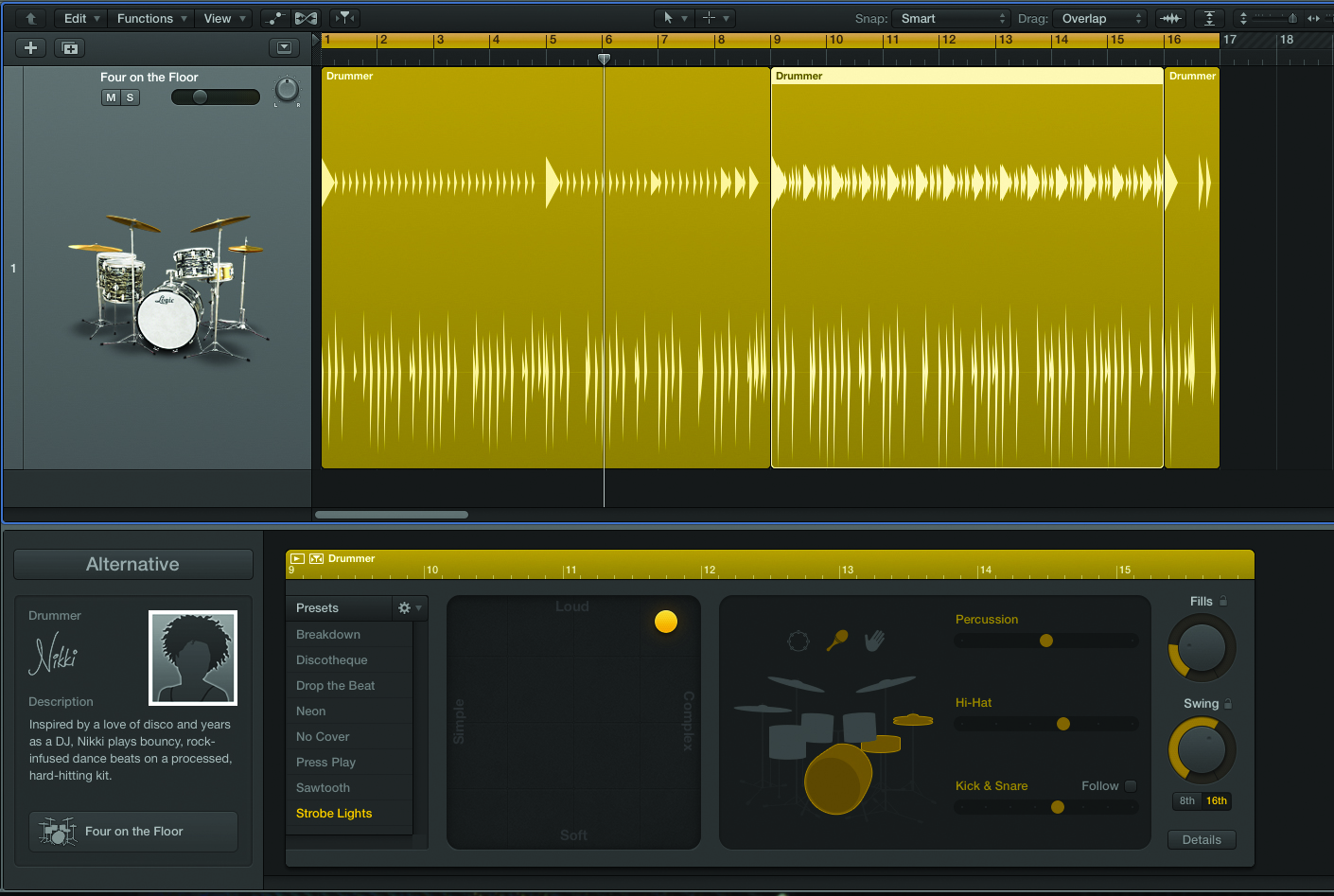
4: Let’s copy-and-paste the region, and try bumping up the strength and adding a shaker to create a more intense section. We could also chop out the last bar from this region and set the Fills to 100 per cent, to create a turnaround.
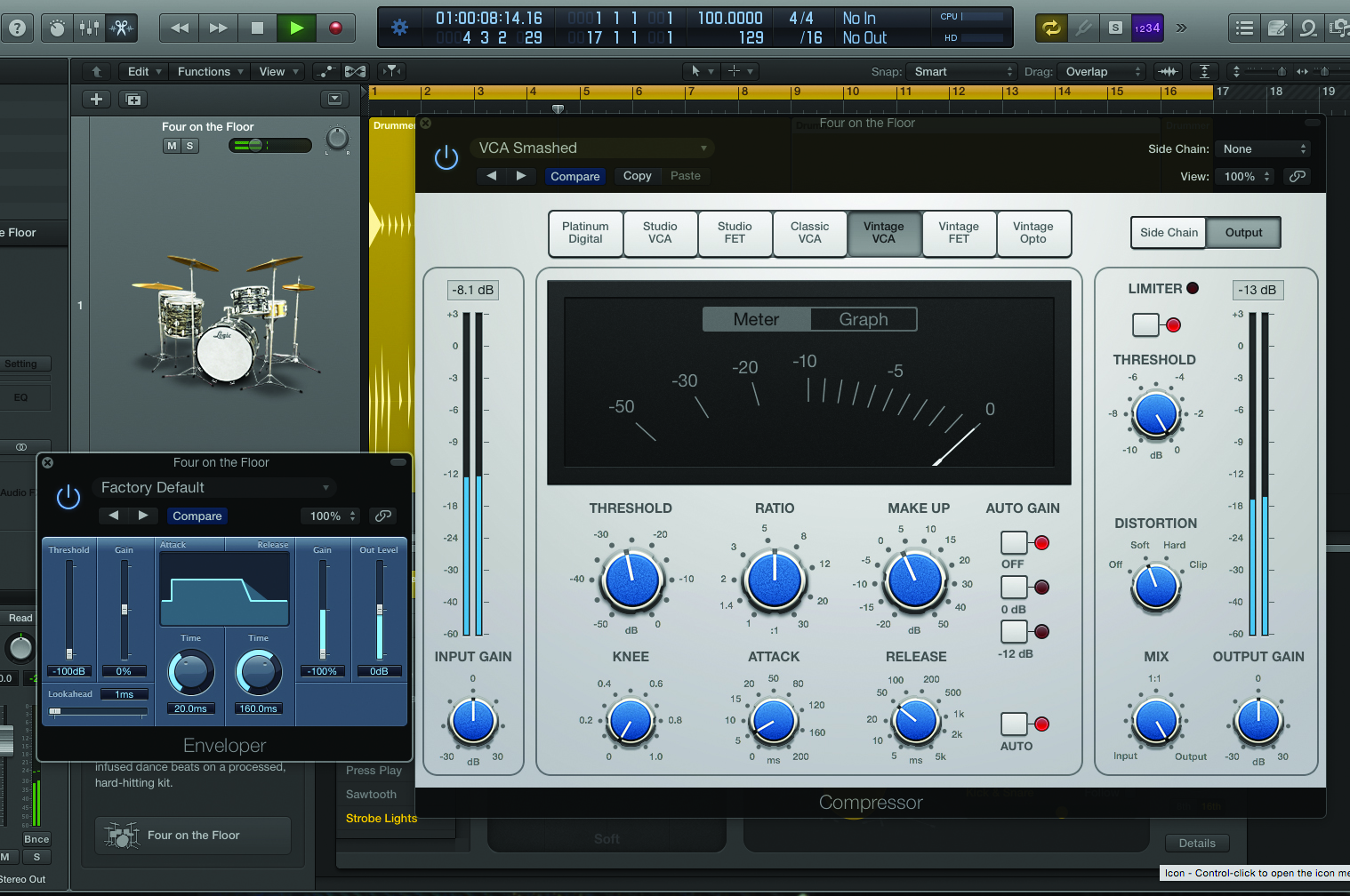
5: To tighten up the live sound, insert an Enveloper and pull down the Release gain. Follow this with a Compressor, load up the VCA Smashed setting, then dial back the Threshold and Make Up so it’s less extreme.

6: You can fine-tune elements of the drum kit by clicking under the Drummer description. However, if you right click on the region and go to Convert > Convert to MIDI Region, you’ll be able to edit and use the groove with your own sounds.
Click Here To Continue
This tutorial is endorsed by Point Blank. With courses in London, online and now in LA, Point Blank is the Global Music School. You can study sound to picture on their Music Production Diploma courses, with pro industry tutors.
